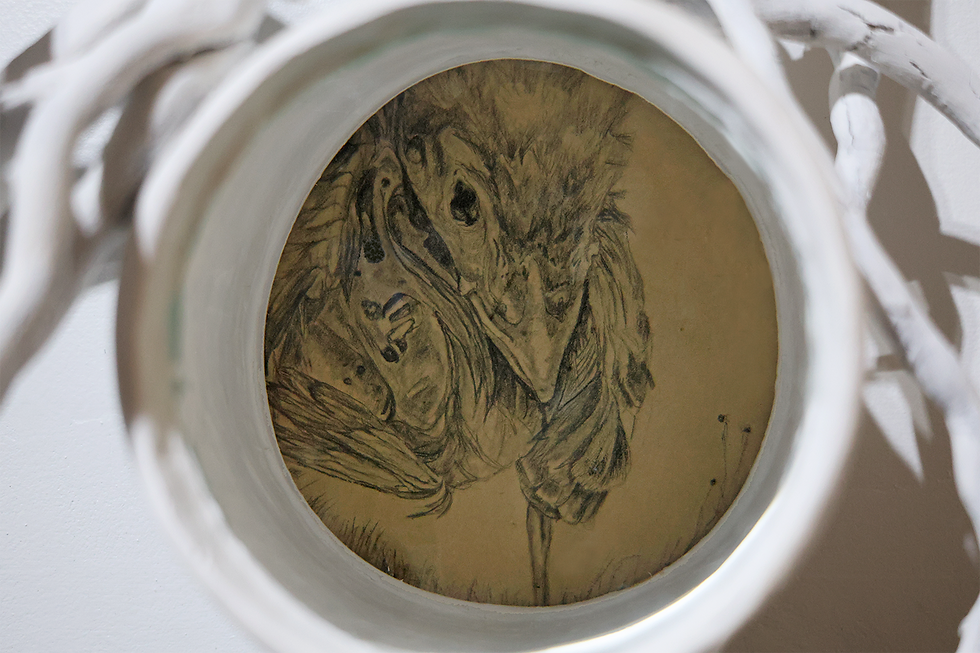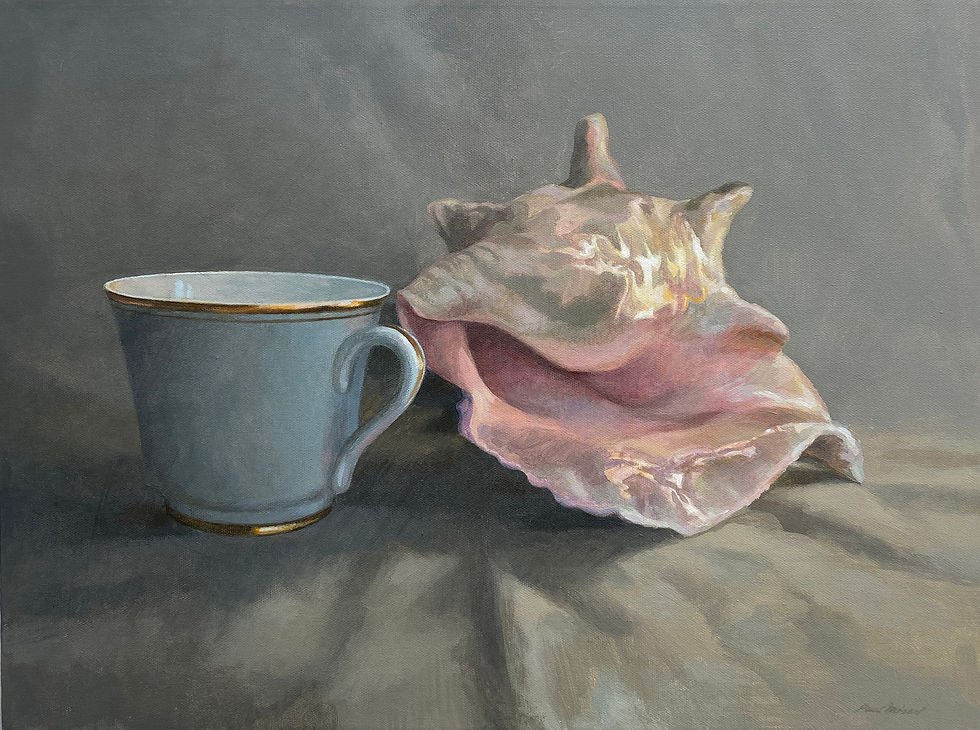First Thursday Opening Reception: September 4, 5-8pm
Artists' Talks with Paul Missal, Robert Shepard, Anastasiya Gutnik,
and Noah Alexander Isaac Stein: September 14 at 2:00pm.
September 3-September 27 — MAIN GALLERY
Revisited
— Paul Missal —
In his new exhibition Revisited, long-time artist and arts educator Paul Missal explores the contrasting allure and danger that attend our universal symbols. Simultaneously sensual and uncompromising, through large scale paintings Missal weaves together elements of portraiture, landscapes, and still-life into complex narratives of richly detailed symbolism. For Missal storytelling is an evolving relationship between subject, composition, and feeling, where naturally emergent frameworks of meaning peer deep into the collective well of our unconscious.
Paul Missal Blue Tiger Spirit , Acrylic on canvas 72” x 120”, $12,500
A classically trained painter, Missal completed studies at the Cleveland Institute of Art and Yale University, before becoming inspired by modernists such as Ellsworth Kelly and Alberto Giacometti. Over a career spanning more than 50 years, Missal has woven together these influences to become a pillar of the Portland art community. A teacher for over 30 years at Pacific Northwest College of Art, Missal has inspired generations of Portland artists, and is a founding member of Blackfish Gallery.
Complete. Empty.
— Robert Shepard —
In his new exhibition Complete. Empty., Robert Shepard continues his explorations of color, light, space, and meaning through painting. Expanding beyond casual impressions of minimalism, Shepard’s work instead invites deeper explorations through evocative use of texture, tonal modulations, and simplified composition. Shepard weaves these elements together to deliver a visual experience that defies easy elucidations and offers viewers instead an experiential sense of completeness.
Fascinated by the concept of void, Shepard looks toward the formless and the empty for its potentiality. In emptiness, Shepard perceives the origin of consciousness, the emergence of which is mirrored in the artist’s creation of meaning. Reductive in nature and approach, Complete. Empty. seeks to embrace the void, the space between, and strives to give viewers a sense of meaning beyond the obvious and explainable.
Robert Shepard Blooms too Soon, 2025 Acrylic on Canvas 40” x 40”
............................................................................
GALLERY 2
The Listening Grove
— Anastasiya Gutnik —

Anastasiya Gutnik’s new installation The Listening Grove presents an invitation. Upon entering, Gutnik asks viewers to meditatively pause and let their eyes and bodies adjust to the colors and contours of the work.
Created out of painted tree roots, plaster, and pencil on paper and inspired by the restorative practice of forest bathing, The Listening Grove seeks to connect viewers with a quiet sense of being in nature, and to invite the deep presence of the forest into our minds.
Science tells us that being among trees lowers our body’s stress signal cortisol, but beyond what can be measured, Gutnik seeks something subtler. From a place of stillness, The Listening Grove seeks to shift our attention outward, toward the gentle, intelligent rhythms of the living world. The forest has always been speaking, and we are learning to hear.
Anastasiya Gutnik Held in Rootlight, 2025
Tree roots, paint, plaster, pencil on paper 16” x 12”
............................................................................
JAMES HIBBARD GALLERY
Synthetic Accretion
— Noah Alexander Isaac Stein —

In the synthetic transcendence of new materials, we have created substances which defy both the limits and safeguards of ecological necessity. Just as plastic once freed humanity from the restraints of chemical bonds, now synthetic culture offers us freedom from the human spirit.
In his new installation, Synthetic Accretion, Noah Alexander Isaac Stein, explores AI and plastic as parallel components of an emergent synthetic human experience. Through recovered transparent plastic waste, and shifting multicolored light, Stein mirrors the disorientation and ambient technological allure of contemporary cultural networks.
If the accumulation of microplastics in the human blood stream are a physical manifestation of synthetic process, Stein invites us to consider the immaterial synthetic as a corollary in the dream-oceans of our collective unconscious.
Noah Alexander Isaac Stein Synthetic Accretion, 2025. Recovered plastic, LED lights, and sound composed by Jason Kowalski. Site-specific installation.



























